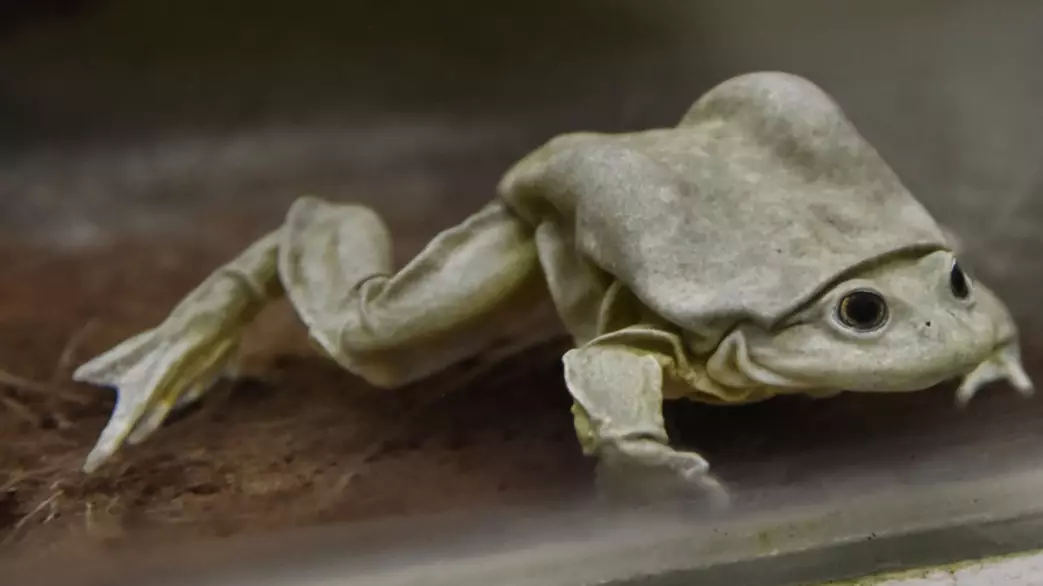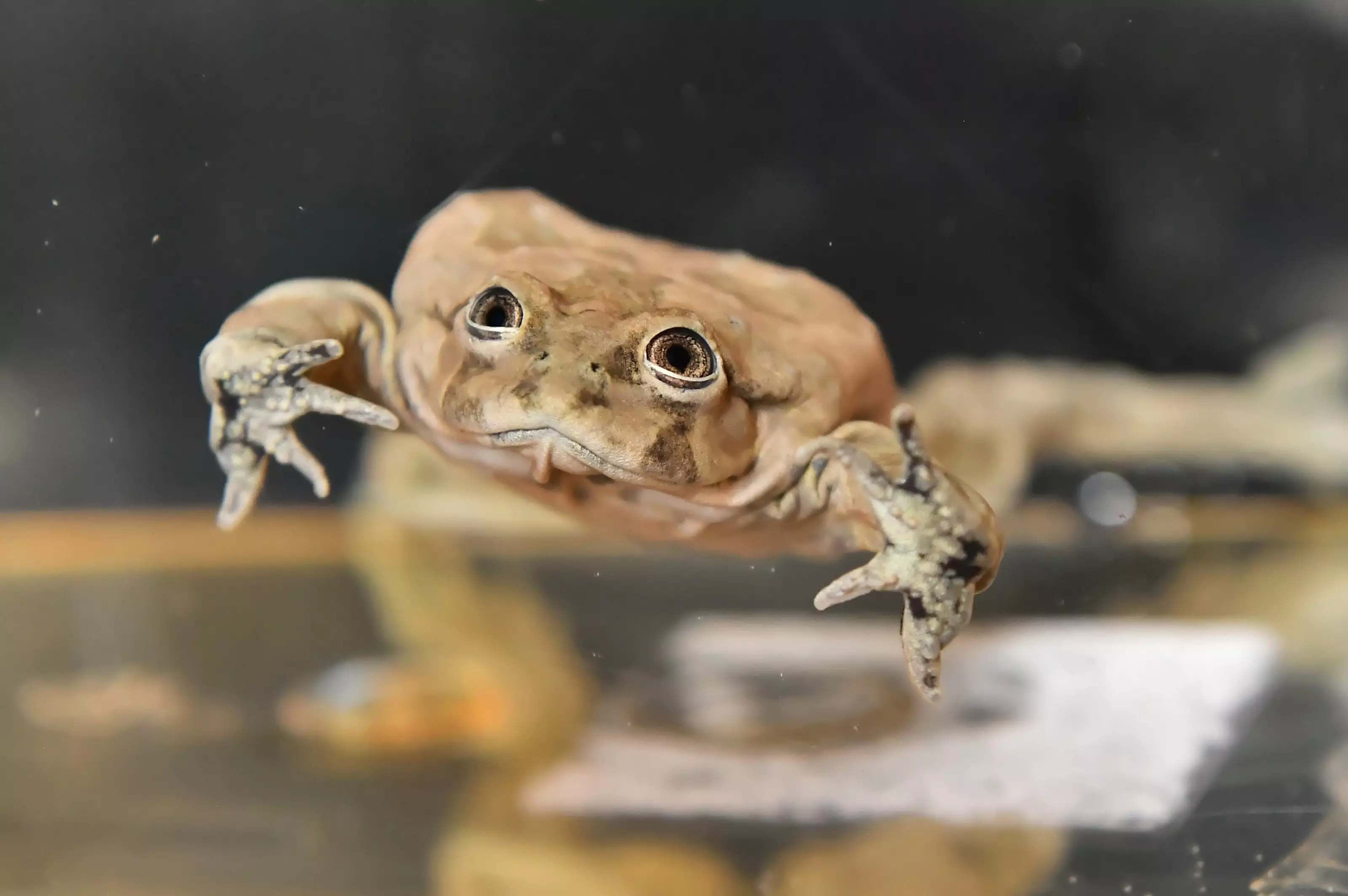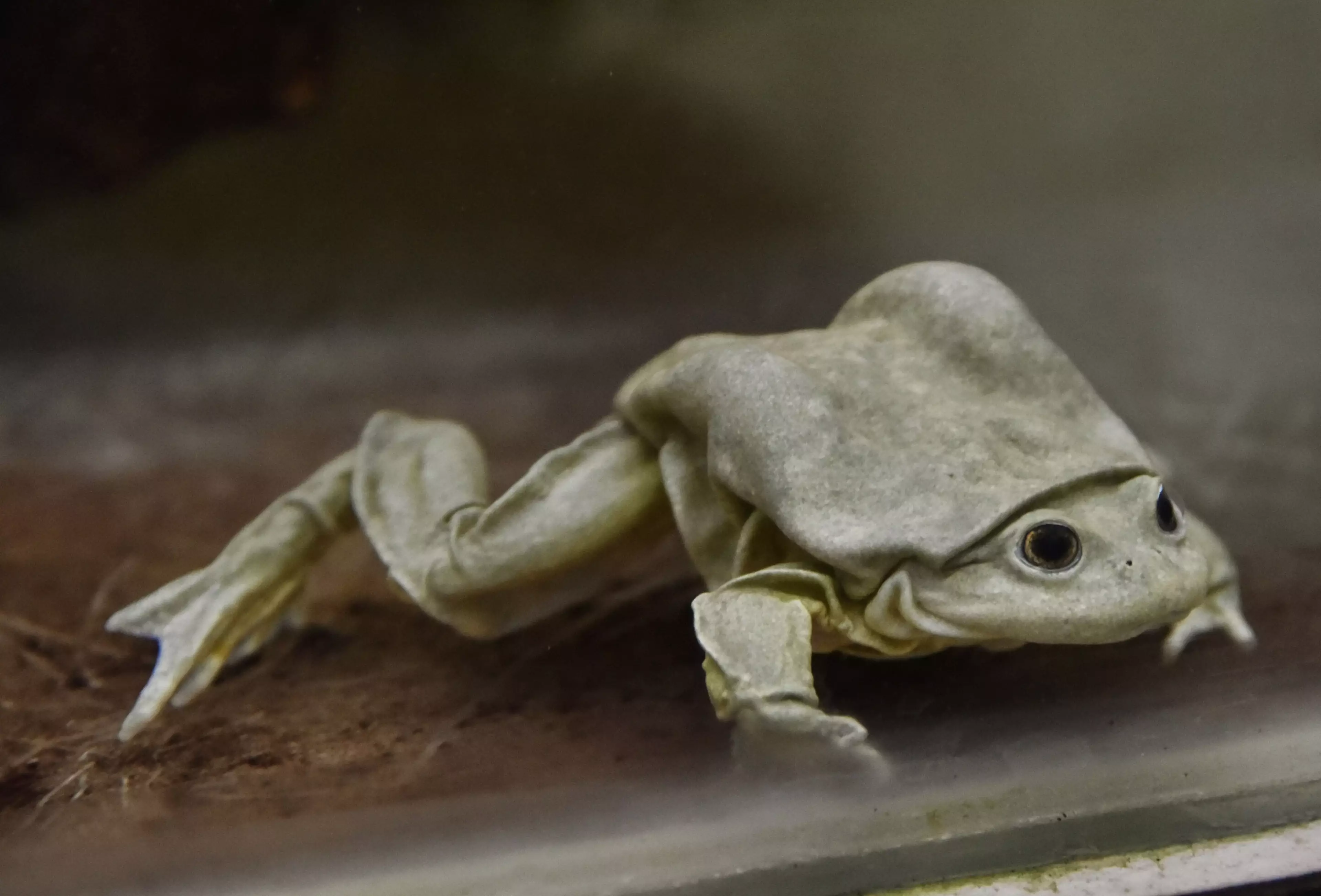
Scientists from across borders are uniting in a bid to save the endangered 'scrotum frog'.
At this point, you're probably thinking 'Wait, what? I didn't know we had any scrotum frogs to save', but we very much do.
There's an incredibly small chance you know them by their proper name Telmatobius culeus, or Lake Titicaca giant frog - though the safe money says you've never heard of them.

They're one of the world's largest exclusively aquatic frogs and you can probably guess where they reside. That's right, they live on people's scrotums. No, that is not right - they live in Lake Titicaca, located on the border between Peru and Bolivia.
Advert
However, they may not be about for much longer, with numbers estimated to have declined by 80 percent between 1994 and 2004.
One of the main threats to the species is the pollution caused by mining. In 2016, more than 10,000 of the amphibians washed up dead on the shores of the lake, and while the mass death was somewhat of a mystery, scientists believe pollution caused by sewage run-off is likely to have been the cause.
Another threat to the species is their use in traditional medicine, having been falsely hailed as an aphrodisiac. Whether this leap was made off the back of its scrotal moniker is unclear - if it was then it's an unbelievably tragically stupid way for an animal to be driven to extinction.

The South American aquatic amphibian of course earned the nickname 'scrotum frog' due to its resemblance to a ball bag - which is weird, 'cause I've always thought my ball bag resembled a South American aquatic amphibian.
Advert
The frog's loose, baggy, folded skin helps it to absorb more oxygen, but its adaptations alone will not be enough to preserve the species unless decisive action is taken. That's why numerous scientific institutions are uniting to protect the future of the creature by studying its habitat and carrying out genetic analyses.

In a Facebook post, the Bolivia Natural History Museum said: "In a coordinated effort, the governments of Bolivia and Peru, with the support of the United Nations Development Programme (United Nations Development Programme) and the financing of the Global Environment Facility (GEF), have formed a cross-border team for conservation and knowledge of the emblematic Titicaca Giant Rana with the vision that the species will have a long-term future."
You can find out more about the project here.
Featured Image Credit: AIZAR RALDES/AFP via Getty ImagesTopics: Science, World News, Interesting, Animals